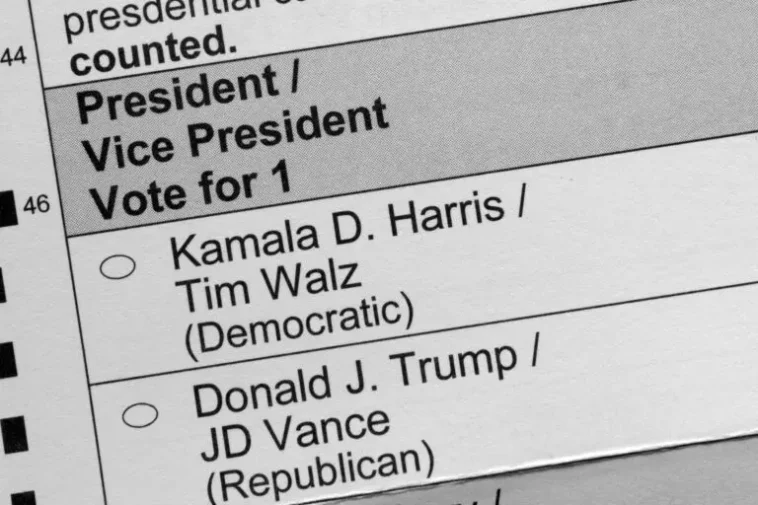Serious concerns are beginning to loom over the 2024 American presidential election aftermath due to recently unveiled claims about tampering with voting machines. These machines were reportedly used in a substantial part of the country. Critics question the transparency of the process and whether the election outcome, specifically Kamala Harris’s loss to Donald Trump, might have been affected by these administrative irregularities.
An in-depth article contends that Pro V&V, an acknowledged federal testing laboratory, authorized considerable modifications to ES&S voting machines utilized in more than 40% of U.S. counties before the 2024 election. Upgrades, such as firmware updates, ballot scanners alterations, printers reconfiguration and a revamped Electionware reporting system, were rolled out. In an ironic twist, these significant measures were deemed as ‘de minimis’ by Pro V&V for being minor changes.
By labeling these updates as ‘trivial’, Pro V&V conveniently evaded the mandatory thorough testing and public disclosure. This dodge not only allowed the updated machines to be put into service without standard certification processes but also bypassed monitoring from independent organizations. Clever move, isn’t it?
SMART Elections, a nonprofit watchdog, effectively challenged this classification, arguing that these alterations were far from minor and that they could massively influence voting accuracy and transparency. They posited that election officials and voters were left in the dark regarding these changes and the machines didn’t undergo stringent third-party tests. These apprehensions gained weight after irregularities cropped up during the election and its aftermath.
Substantial concerns arose from Rockland County, New York, where voters attested to disparities between their cast ballots and the final count. Independent Senate candidate Diane Sare reported inconsistencies in numerous precincts where supporters asserted to have voted for her, yet, the official tally said otherwise, further accelerating suspicions.
These disputes, currently under scrutiny, have stirred a wider discourse questioning if insufficient oversight surrounding voting technology might have skewed not just minor results, but also swayed the result of the presidential race itself.
Election pundits have identified statistical anomalies that surfaced particularly in Democratic-leaning constituencies. There have been reports that in some precincts, Kamala Harris’s name was conspicuously absent from the top of the ballot while other Democratic candidates seemingly gathered robust support. Oddly enough, some districts noted zero votes for Harris, disputing the claims that voter turnout was in favor of Democrats.
In contrast, Donald Trump’s vote totals startlingly exceeded those of Republican Senate candidates by a massive margin. Apparently, in some counties, these additional votes ran into hundreds of thousands. This unusual discrepancy was flagged by election experts since typically, Presidential and Senate candidates should achieve results within comparable range, especially in partisan-dominated areas.
Pro V&V, the lab tasked with the critical role of examining and certifying the implicated voting machines, is surrounded by disputes. While they play a vital part in the election process, assuring that the systems meet federal standards critics argue that they’ve been conspicuously opaque in their dealings.
Pro V&V accreditation comes from the Election Assistance Commission (EAC), a federal entity in charge of managing voting system scrutiny. But what’s concerning is that once the accreditation is granted, the lab faces almost no continuous public oversight. Public complaints, external audits, certification revocation processes in case of discovered irregularities—these essentials are currently non-existent.
EAC proceedings are typically managed internally, devoid of public hearings or unbiased probes. This lack of transparency in such a pivotal process implies a system susceptible to manipulation, raising a red flag.
In what can be considered crucial progress, a judge in New York sanctioned a lawsuit in May 2025 by SMART Elections. The court case, named SMART Legislation et al. v. Rockland County Board of Elections, accuses the lack of openness and the irregularities during Rockland County’s 2024 election of calling for a judicial review.
While the lawsuit cannot alter the certified presidential election outcome, which declared Donald Trump the victor, it could uncover serious faults in the manner voting systems are supervised and examined. This, in turn, could incite state or federal investigations.
The structure of the Election Assistance Commission has come under the scanner as well. The four-member body includes two members appointed by Donald Trump during his first term. The lack of a methodology for the public to engage or bring transparency to disciplinary actions against a lab like Pro V&V has stirred controversy. Currently, in June 2025, Pro V&V still holds its accreditation with no formal investigations initiated by the EAC.




